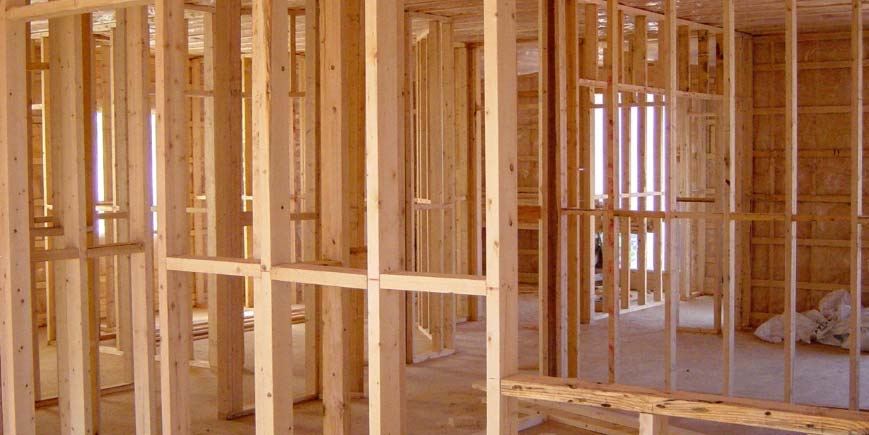This information should not be interpreted as financial, tax or legal advice. Mortgage and loan rates are subject to change.

Categories: government and politics | house prices
Continuing a trend of UK governments falling short of their long-standing housebuilding goals, reports indicate that the current Labour government are also a long way from meeting their targets.
Over the last few decades, both Labour and Conservative governments have routinely failed to come close to the construction targets they set themselves.
As a result, pressure falls on other housing options and the private rental sector is a big part of the solution.
This presents opportunities for private landlords, though there is also great pressure placed on them from upcoming reforms to the PRS. There are potential problems on all sides.
Construction output decreasing
According to data from S&P Global, housebuilding rates are at their lowest levels in 12 months, which does not bode well for the rest of 2025.
Global economic uncertainty is a major factor in the slowdown of construction projects. Among other recent sources of uncertainty, there are Donald Trump’s international trading tariffs and the Bank of England voting to cut the Base Rate once again.
This medley of economic factors has influenced developers into putting their projects on hold. Construction firms are therefore blocked from making as much progress as they intend.
Skilled worker shortage
For these high housebuilding ambitions to be realised, the country needs enough skilled labourers to do the necessary work.
Baroness Smith of Malvern, a member of the House of Lords affiliated with the Labour Party, has spoken openly about the threat of construction worker shortages to the Deputy PM’s targets.
Speaking on Times Radio, Baroness Smith blamed a “fragmented skill system” shared among too few workers in the UK. She admitted she was “not confident” about their ability to build 300,000 houses.
Up to 25% of the workforce in the construction industry are set to retire in the next 10 to 15 years. Unless the industry can somehow make back that loss of workers, the lack of new houses may be the least of the government’s concerns.
Cutting through red tape
Labour intend to push through any obstacles that stand in the way of the planning system, which Chancellor Rachel Reeves said was shockingly slow. This includes environmental regulations and watchdogs, such as Defra (Department for Environmental Food & Rural Affairs).
The government has been dismissive of how housing and roadbuilding developments could impact vulnerable habitats and species. Rare newts, bats and spiders are not to be prioritised, says Labour – human families are.
Reach for the stars
One of Labour’s main slogans since the 2024 election campaign has been to “Get Britain Building”.
Frequently donning a hardhat and high-vis jacket, housing secretary Angela Rayner has been very vocal in her promises to finally deliver the 300,000 homes per year. In Labour’s manifesto, the longer term target over five years is 1.5 million new homes.
The origin of the ongoing “300,000 new homes” conviction, repeated by so many governments, is hard to pin down. Some sources trace it back to the 2004 Review of Housing Supply by Kate Barker. The necessity of this many new houses has been hotly debated for years.
It has been calculated by local authorities that, in order to meet Rayner’s expectations, builders will have to seriously pick up the pace; an eye-watering 149 new homes constructed per hour will be required.
Councils are straining from the pressure from the major political parties. Yvonne Gagen from West Lancashire Borough Council said this on the BBC Radio 4 Today programme:
I feel that we are going to be on a collision course with Labour.
And it’s not just Labour councils; it’s Liberal Democrats, it’s Conservatives. They’ve all said the same thing. Over these planning targets, they are absolutely impossible and unrealistic.
Low quality housing developments
Developers and industry experts worry that, with Labour being so far behind schedule, hurrying the pace of housebuilding to reach the yearly target will only lead to rushed, inadequate construction. This would, of course, undermine Labour’s agenda of improving quality of housing, not just quantity.
The Completions and Markets Authority have already found this to be the case. Their report found that many new-build houses have noticeable issues, including poor finishes, unfinished plumbing and faulty electrical work. This has led to reduced trust in new-builds as a viable option for renters and homeowners.
Impact on PRS
Looking at how many obstacles they have to overcome from all sides, the likelihood of Labour meeting their housebuilding targets feels low.
With the housing shortage no closer to being resolved – and potentially worsening – it seems inevitable that there will be higher demand for private rental properties.
Arguably, Labour have a double-edged sword in their hands. They cannot build enough homes to make property affordable, or of a quantity required to house the public. Moreover, they are applying pressure to private landlords, which is driving up rents. Some have chosen to leave the sector.
Could the country be at risk of rising homelessness, the very outcome Labour are keen to avoid?


